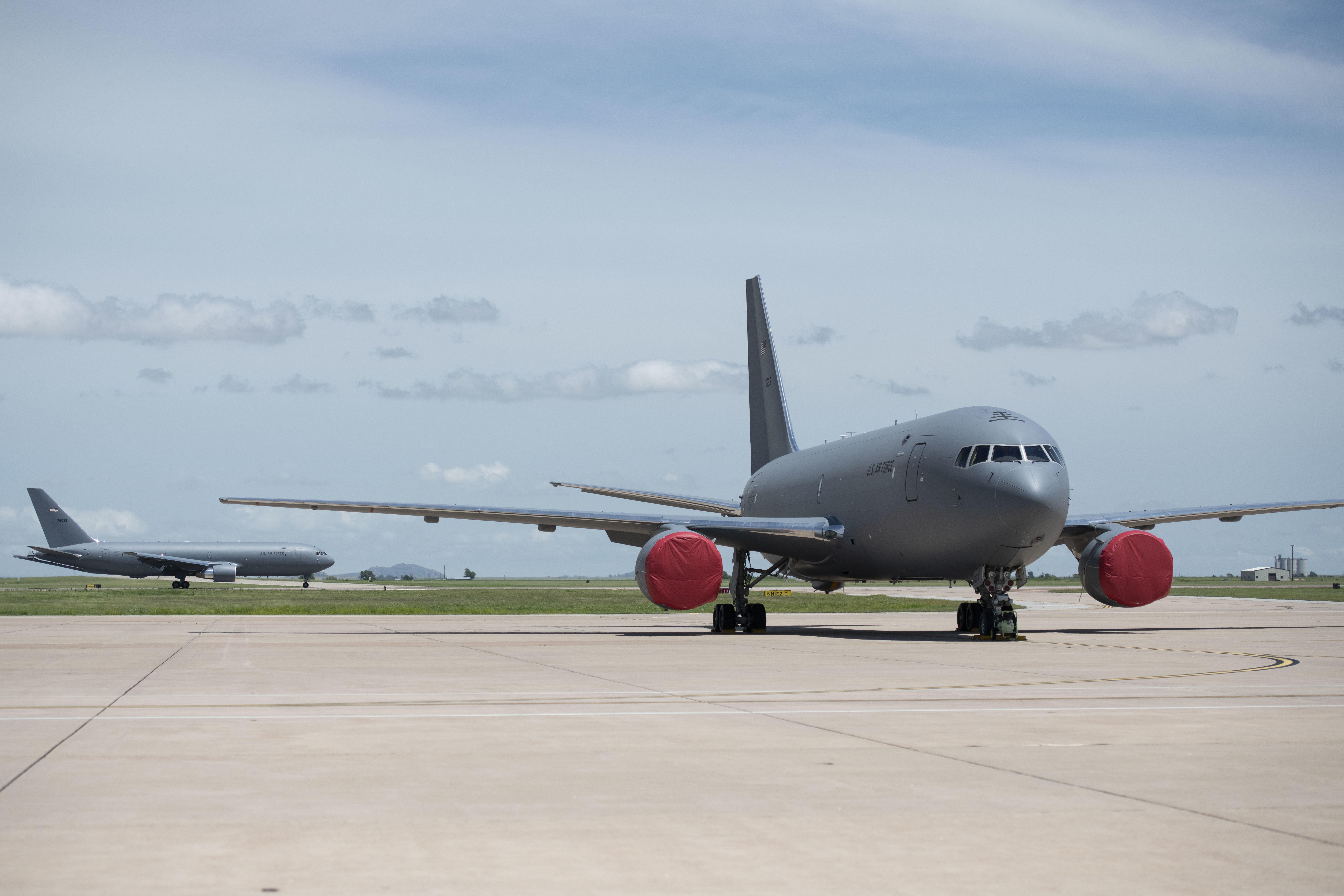
Credit: U.S. Air ForceThe U.S. Air Force has upgraded an existing deficiency for the KC-46A Pegasus fuel system to Category 1.
The service’s program office first identified “excessive fuel leaks” in July after an air refueling test. The Air Force and Boeing are working together to determine the root cause and implement corrective actions. A Category 1 deficiency means the government has identified a risk that jeopardizes lives or critical assets.
“The KC-46 Program Office continues to monitor the entire KC-46 fleet and is enhancing acceptance testing of the fuel system to identify potential leaks at the factory where they can be repaired prior to delivery,” according to an Air Force statement.
Boeing is contractually obligated to rectify this deficiency at no additional cost to the Air Force.
“We are disappointed to learn of this development and are already implementing assembly and installation improvements to correct the issue,” Boeing spokesman Larry Chambers said in a statement to Aerospace DAILY. “We have repaired several of the airplanes and will continue to implement repairs as needed. Boeing is working with urgency to address this issue.”
The Air Force discovered several required fuel-system repairs, Chambers said. The fuel system is equipped with redundant protection for fuel containment.
“In some cases with this issue, aircraft maintenance crews are finding fuel between the primary and secondary fuel barriers within the system,” Chambers said.
The KC-46A program still faces other unresolved Category 1 deficiencies that involve the Remote Vision System (RVS) and the boom telescope actuator. The problem with the RVS is what the Air Force calls a “rubber sheet” effect that distorts the image on the visual display used by the boom operator during refueling operations. The actuator on the boom needs to be more sensitive to smaller receiver aircraft, such as A-10s and F-16s. Boeing has agreed to pay for the RVS design fix, while the Air Force will finance the design change to the actuator.
“There’s profound problems with the system,” Air Force Chief of Staff Gen. David Goldfein said March 3 during a Senate Armed Services Committee hearing.
The service is certifying the aircraft to conduct airlift and medical evacuation missions. The plan is for the Air Force to employ the KC-46 in those roles while a long-term fix is being developed, Goldfein said.
Goldfein told new Boeing CEO Dave Calhoun to focus on the KC-46 program, even as it is fixing the 737 MAX. Calhoun said the KC-46 is his top military priority.
“I have seen a change in the behavior of that company since he took over, and so that’s why we’re more confident sitting here today that we have a serious fix on the table,” Goldfein said. “We’re in final negotiations, so we can’t go into any more detail than that. But I will say that it’s looking better today than it was even six months ago.”



Ingen kommentarer:
Legg inn en kommentar
Merk: Bare medlemmer av denne bloggen kan legge inn en kommentar.